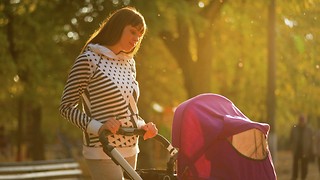Green Belt building project to go ahead
Site in north-west Cambridge will eventually provide accommodation for 2,000 students
The University has been given the go-ahead to expand into Cambridge’s Green Belt.
After a lengthy consideration process, planning inspectors agreed that the University’s needs merit the removal of a significant parcel of land from the North Western Green Belt.
The 297-acre site on the city’s north-west edge will be used to provide accommodation for 2,000 students and homes for 1,500 university staff, as well as academic facilities, research and development space and a hotel. Although it is currently owned by the University, permission was needed to release the land for long-term development plans.
Plans to create up to three new Colleges on the site were put forward in 2004, but as yet remain unconfirmed.
Although the site is on Green Belt space, inspectors deemed that the economic, intellectual and educational needs of the project were “of greater weight than the substantial Green Belt functions of the land.”
Roger Taylor, Project director for North West Cambridge, stressed that any development on the site would go through the normal planning process.
“From the project’s start, the objective has been to provide the University with much-needed living and research accommodation that will allow it to grow and prosper,” he said. “This is a significant project for the University that we expect to be delivered over a 15 to 20-year period.
“Since the start, we have been committed to creating a successful and sustainable community that comprises homes for University staff, market housing as enabling development, academic facilities, research and development space, and community facilities such as a primary school and shops.
“The physical constraints of the city centre preclude expansion of the University there; the North West Cambridge site offers the space that the University requires in order to grow.”
Martin Baker, conservation manager at Cambridgeshire Wildlife Trust, is concerned about the impact of the development.
“It seems that development has expanded from what the council originally hoped for, which will squeeze the green space between residential area and the motorway” he said.
“The quantity of green space is narrow, and, as lower than the motorway, will be noisy. Aside from wildlife, this doesn’t seem like a great opportunity to create a quality space in which residents can interact with their wider environment.”
To counter environmental impact, the development will take measures to preserve the site’s “special scientific interest” status, working to promote biodiversity in the surrounding areas and retaining the Girton Gap, a green corridor separating Girton from the city. The City and District councils also claim policies underlying the development will “set world-leading standards in carbon and water reduction”, in line with government targets to make all new homes zero carbon from 2016.
The planned development was first incorporated, controversially, into the Cambridge North West Draft Area Action Plan (AAP) in 2008. The approval and emendation comes after a rigorous independent examination and prolonged period of public consultation in June of that year.
The plans were motivated by shortages in affordable postgraduate accommodation and the need to take advantage of the high density of technology companies in the city. As well as en-suite study bedrooms for postgraduate students and a minimum 100,000 square metres of research space, the site will accommodate 1,500 private homes and community facilities.
Although the adoption of the Area Action Plan precipitates a lengthy planning application process, the City Council estimates that “the first homes could be built in 2011/12.”
“The next stage for the project is the start in November of a comprehensive consultation to engage all those individuals and groups who want to be involved in refining our Master Plan for the site,” said Taylor.
“We are determined that future proposals for the site meet not only the University’s needs but also have the support of the local community.”
 Features / Should I stay or should I go? Cambridge students and alumni reflect on how their memories stay with them15 December 2025
Features / Should I stay or should I go? Cambridge students and alumni reflect on how their memories stay with them15 December 2025 News / Dons warn PM about Vet School closure16 December 2025
News / Dons warn PM about Vet School closure16 December 2025 News / Cambridge study finds students learn better with notes than AI13 December 2025
News / Cambridge study finds students learn better with notes than AI13 December 2025 News / SU reluctantly registers controversial women’s soc18 December 2025
News / SU reluctantly registers controversial women’s soc18 December 2025 News / News In Brief: Michaelmas marriages, monogamous mammals, and messaging manipulation15 December 2025
News / News In Brief: Michaelmas marriages, monogamous mammals, and messaging manipulation15 December 2025








